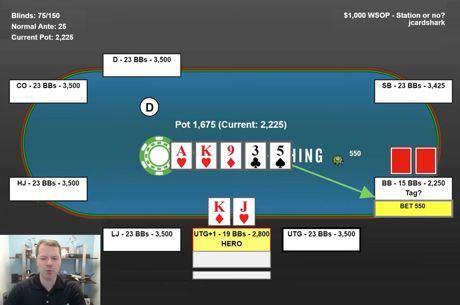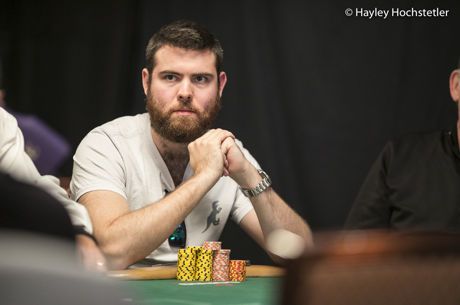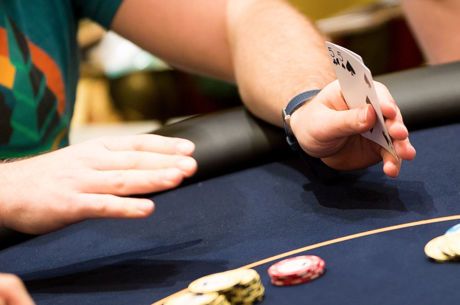The Right Way to Play an Underpair

I was recently told about a hand from a $5/$10 no-limit hold'em cash game by one of my students that demonstrates exactly how you should play a marginal underpair. Although he ended up losing the pot, he played it great.
A loose, splashy player raised to $30 out of his $1,000 effective stack from first position at a seven-handed table and our Hero with 10?10? elected to three-bet from second position to $90.
While calling would normally be my default play here because I do not want to get four-bet off my hand and there are lots of players yet to act, when facing a raise from a loose, splashy player, three-betting a strong linear range for value makes a lot of sense because you can expect him to call with numerous inferior hands such as 8x8x and A?9?.
Only the initial raiser called. The flop came Q?5?2?, leaving Hero with a marginal underpair. The opponent checked. The pot was $195.
This is an excellent spot either to check or bet small. If Hero checks, he can easily call a turn bet and can often call a river bet (assuming he thinks his opponent will somewhat frequently bet the turn and river as a bluff). Hero can also bet small in order to extract value from numerous worse marginal made hands like 8x8x or A?4?, and also to protect against hands containing various overcards like AxJx or QxJx.
The main mistake many players make in this situation is to bet large, perhaps $110 or more, because then, they will usually only get called when they are beat.
Hero bet $40 and his opponent called.
The game is called "no-limit" for a reason. You can bet any amount, even a small one.
While the $40 bet may seem especially small, it is perfectly fine. Do not feel as if you must make a bet that is at least as large as the bet on the previous betting round. The game is called "no-limit" for a reason. You can bet any amount, even a small one.
The turn was the 3?, making the board Q?5?2?3?. The opponent checked. The pot was $275.
I am again fine here with either checking or betting small, perhaps $100. I typically check in this spot, looking to call most river bets. Checking behind will ensure you do not get check-raised and also allows you to easily see the showdown.
Hero checked behind. The river then brought the 10?, making the final board Q?5?2?3?10? and giving Hero a set. That is lucky! The opponent bet $130.
At this point, Hero has the effective nuts and should raise. While it is true that he may only get called by better hands if his opponent was weak and passive, given the opponent's loose, splashy tendencies, it is safe to assume he will call a modestly-sized raise with perhaps top pair and better made hands.
Hero raised to $330 and the opponent quickly called with 8?7? �� he'd rivered a flush.
Although Hero lost this hand, he played it well. Notice that he wins this pot every time his opponent does not backdoor a premium hand. When the opponent does not (about 90 percent of the time), Hero will either win a small pot when his opponent gives up or a medium pot when his opponent decides to bluff. This will result in Hero printing equity in the long run.
If you want to continue working on your poker skills, be sure to sign up for your free 7-day trial to my interactive training site, PokerCoaching.com. There you can hone your skills in over 400 interactive quizzes and 35 in-depth homework challenges.
Thanks for reading and good luck in your games!
Jonathan Little is a professional poker player and author with over $6,900,000 in live tournament earnings. He writes a weekly educational blog and hosts a podcast at JonathanLittlePoker.com. Sign up to learn poker from Jonathan for free at PokerCoaching.com. You can follow him on Twitter @JonathanLittle.









